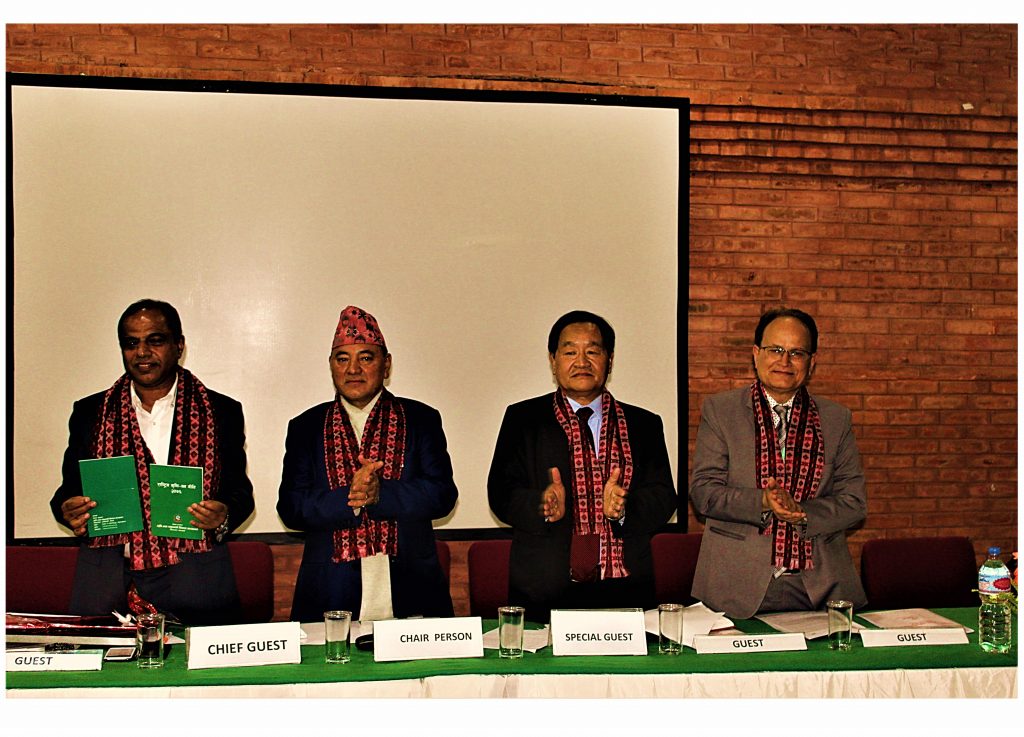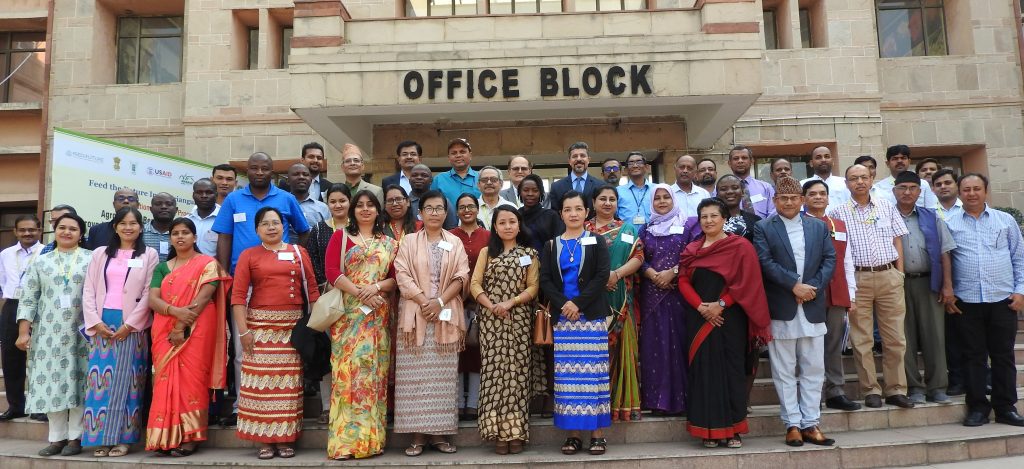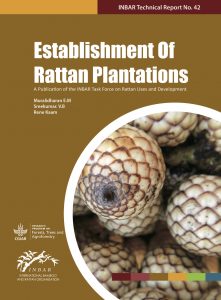FTA brings evidence-based research and technical support to the table
In landlocked, mountainous Nepal – a country with 45% forest cover – agroforestry is not a new practice. Many farmers have kept trees in and around croplands to diversify their incomes and build resilience to the shocks of a changing climate.
But legal restrictions on the trade of timber and forest products and the harvest and transport of trees grown on agricultural land, combined with 32 (often contradictory) national polices that referred to agroforestry, have largely discouraged farmers from growing trees on their farms.
Change is now in course!
In 2019, following India, Nepal became the second country in the world to have a national agroforestry policy. As the world’s largest research for development program to enhance the role of forests, trees and agroforestry in sustainable development, the CGIAR Research Program on Forests, Trees and Agroforestry (FTA) – through its partner World Agroforestry (ICRAF) – played a pivotal role in the development of the policy, building on its previous experience in India in 2014. In 2016 and 2017, the development of the policy was supported by a program by the Climate Technology Centre and Network (CTCN).
“The dividends of implementing the agroforestry policy in India are impressive: around 2% increase in forest and tree cover during 2015–2019 – of that around 1.8 % is outside of forests – and trees grown outside forests are producing more than 70% of the country’s timber requirement reducing pressure on forests. We expect a similar transformative impact of policy implementation in Nepal,” said ICRAF Principal Scientist and Regional Director of the South Asia Regional Program, Dr Javed Rizvi.
Nepal is among the world’s most vulnerable countries to the effects of climate change, such as droughts, storms, landslides, soil erosion and avalanches. Melting snow and glaciers in the Himalayas result in devastating glacier lake outburst floods.
Agroforestry is recognized by more than 60 countries as a tool either for adaptation or mitigation of climate change, according CGIAR research, as well as being a proven way to improve food, nutritional and environmental security. Thus, development of the policy is in line with Nepal’s Nationally Determined Contributions (2016) and Climate Change Policy (2011).
Extensive engagement
“Any process leading to wide-scale change in the land-use sector has to be inclusive and multifaceted. We adopted a holistic approach, the most reasonable and efficient pathway for inducing transformational changes in complex and socially-differentiated agricultural areas,” said Dr Rizvi, who was confirmed as the only non-governmental member of the inter-ministerial committee (IMC) that oversaw the policy development. To date, he remains associated with the committee that oversees policy implementation.
Recognition of the need to formulate and implement a National Agroforestry Policy in Nepal originated during the three-day national consultation workshop on agroforestry held in Kathmandu on 26–28 March 2015. Involving more than 150 stakeholders representing various sectors related with agriculture, forestry and rural development, the workshop was jointly organized by the Ministry of Agriculture Development (MOAD), Ministry of Forest and Soil Conservation (MFSC), the Asia Network for Sustainable Agriculture and Bioresources (ANSAB), and ICRAF. This consultation led to the 2015 Kathmandu Declaration on Agroforestry. Signed by the Secretaries of the Ministry of Agricultural Development and the Ministry of Forest and Soil Conservation, the Declaration called for the development of an agroforestry policy for Nepal to help improve the livelihoods of smallholders and enhance their socioeconomic resilience.
In seven consultations held between 2016 and 2018, perspectives were gathered from more than 550 stakeholders and incorporated into the draft policy, which was submitted to the Ministry of Agricultural Development in September 2018. After approval by the Cabinet in a session chaired by the Prime Minister, the final policy was launched on 3 July 2019 by the Minister of Agriculture in Kathmandu.
ICRAF provided technical support to the inter-ministerial committee constituted to oversee the policy formulation, with financing from the Climate Technology Centre and Network. This support included an analysis of 32 policies, laws and strategies affecting agroforestry in Nepal, pointing to a clear need to develop a new agroforestry policy.
“It took a lot of engagement with a lot of people at all levels of society, from ministers and secretaries of departments through to state leaderships to communities and farmers’ associations. Throughout the process, we continuously worked with the government and stakeholders as a trusted technical partner and supported the process based on our experience with Indian agroforestry policy,” said Dr Rizvi.
Launching the policy, Agriculture Minister Mr Chakrapani Khanal said, “With the approval and launch of the National Agroforestry Policy, Nepal achieved the distinction of being second country globally, after India, to launch an agroforestry policy”.

During the consultation period, engagement also spread beyond national borders. Through its South Asia Regional Program (SARP), ICRAF initiated brainstorming with government policymakers, thinktanks, researchers and others on the requirements of a national agroforestry policy. Currently, the program is working with stakeholders in Bangladesh and Maldives on their agroforestry policies.
In 2019, SARP and its partners, especially the Indian Council of Agriculture Research (ICAR) and Tamil Nadu Agriculture University trained 26 mid-level policymakers from Asia and Africa[1] in agroforestry policy, research, innovation and development, catalyzing agroforestry research and development in the respective countries. Between 10 and 24 October, 2019, the group participated in three phases of training, first at ICRAF’s Delhi office, then at the Central Agroforestry Research Institute (CAFRI) in Jhansi, Uttar Pradesh, and finally at the Forest College and Research Institute (FCRI) in Mettupalayam, Tamil Nadu. The curriculum comprised 26 classroom lectures, 8 case studies and several field visits.
Addressing the trainees, Mustapha El Hamzaoui, Director of the Food Security Office at the United States Agency for International Development (USAID) in India, which funded the training, said: “Agroforestry is the ideal approach to secure a sustainable future for humankind. You are all becoming ambassadors of agroforestry for your countries”.
The program ignited interest from the South and Southeast Asian regions. ICRAF is also working with member states of the South Asian Association for Regional Cooperation and the Association of Southeast Asian Nations (ASEAN). ASEAN ministers of agriculture and forestry adopted the ASEAN Guidelines for Agroforestry Development in 2018, and the Food and Agriculture Organization of the United Nations (FAO) established a technical cooperation program with ASEAN to implement the guidelines, focusing on three pilot countries: Cambodia, Lao PDR and Myanmar. FTA, through ICRAF, is the program’s main technical partner.
“Under this cooperation, national agroforestry roadmaps will be developed to guide activities moving forward,” said Delia Catacutan, Regional Coordinator of ICRAF in Southeast Asia.

Trainees, trainers and donor representatives at the inaugural day of the training
Roadmap to impact
The National Agroforestry Policy is expected to clear the path for a more comprehensive use of agroforestry by smallholders, and to strengthen the capacity of policymakers, researchers and extension workers to promote more resilient farming systems, support tree-planting initiatives, and ensure ecological stability by reducing pressure on natural forests from over-collection of fuelwood and fodder. It also aims to facilitate investment in agroforestry and promote connections between agroforestry farmers and markets, industries, banks and insurance providers.
Intensifying the agricultural value of cultivated areas, agroforestry – which can be less labor-intensive than annual crop farming – could be a game-changer in rural communities affected by migration. As young men (mainly) leave their villages for paid work in other parts of the country or overseas, it is the elders, women and children who must bear the burden of cultivating the fields. This results in underused existing agricultural land and household incomes suffering. Agroforestry could help communities develop new income streams and get more out of their land – without having to cover so much ground.
Mapping it out
Land productivity varies widely across Nepal, making it difficult for government planners, development agencies and scientists to target suitable areas for agroforestry in order to implement the policy. In many situations data is not available. For this reason ICRAF continues to provide scientific evidence-based advice to support the development of agroforestry in the country. Researchers from the Vindhyan Ecology and Natural History Foundation, Ranchi University, Ministry of Forest and Environment of Nepal, and ICRAF’s South Asia Regional Program used different geospatial datasets of land, soil, climate and topography to identify potential areas where trees can be sustainably established on farms. In 2020 they published their findings in the journal Modeling Earth Systems and Environment.
“Agroforestry is very important for Nepal to improve livelihoods and the resilience of smallholders to the challenges of climate change and extreme events. In close collaboration with the Ministry of Agriculture and Livestock Development, ICRAF and the provincial governments, we are mainstreaming agroforestry in our programs,” said Bishwa Nath Oli, Secretary, Ministry of Forests and Environment, Government of Nepal.
This is a result that FTA is proud to have facilitated.
[1] Trainees were from Bangladesh, Botswana, Cambodia, Malawi, Myanmar, Nepal, Kenya, Sri Lanka, Tanzania and Uganda.
This article was written by Erin O’Connell.
Produced by the CGIAR Research Program on Forests, Trees and Agroforestry (FTA) together with one of its managing partners, the International Bamboo and Rattan Organisation (INBAR). FTA is the world’s largest research for development program to enhance the role of forests, trees and agroforestry in sustainable development and food security and to address climate change. CIFOR leads FTA in partnership with Bioversity International, CATIE, CIRAD, INBAR, ICRAF and TBI. FTA’s work is supported by the CGIAR Trust Fund.












